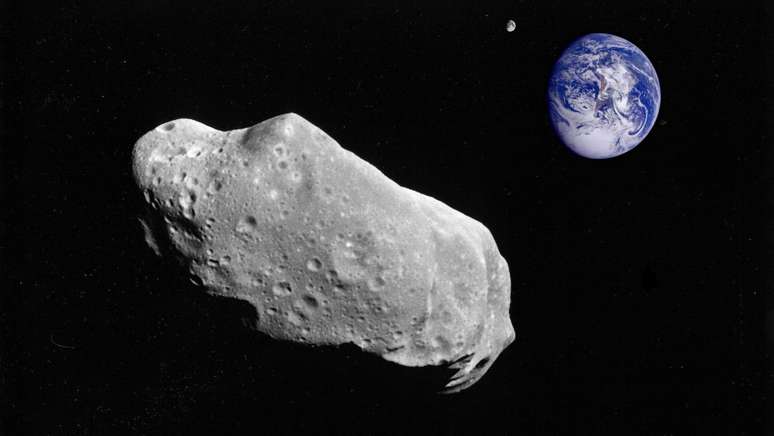Asteroid 2023 DW measures about 50m in diameter and was discovered in February. It will approach Earth and have a 99.82% chance of “missing” our planet
This Tuesday (7), the NASA has announced that it is monitoring the asteroid 2023 DW, a nearly 50m-diameter space rock that is unlikely to hit Earth on February 14, 2046. And rest assured: according to the European Space Agency’s Coordination Center for Near-Earth Objects, the possibility of rock “missing” from our planet is 99.82%.
- Meet asteroids that have already been towards Earth and caused fear
- The photos show asteroid 2023 BU as it skimmed past Earth
According to preliminary data, the asteroid is located 0.12 astronomical units from Earth, with each unit representing the distance between our planet and the Sun. It takes 271 days to complete one orbit around the Sun, and during the closest approach, it will be 1.8 million kilometers from Earth, a very safe distance.
In a publication on Twitter, NASA explained that the asteroid is new and will still be monitored. “When new objects are discovered, it takes a few weeks for [coleta de] data to reduce the uncertainties and predict their orbits in the future,” they explained.
We have been tracking a new asteroid called 2023 DW that has a very small chance of hitting Earth in 2046. Often, when new objects are first discovered, several weeks of data are needed to reduce the uncertainties and adequately predict their orbits in the future. future . (1/2) pic.twitter.com/SaLC0AUSdP
— NASA Asteroid Watch (@AsteroidWatch) March 7, 2023
The asteroid was discovered in February, and as of this Tuesday (7), orbital analyzes of the asteroid have been made based on just 62 observations. It appears to be about 50 m in diameter, nearly three times the size of the 18 m-diameter meteor that
Russia, in 2013. The shock wave released by the explosion destroyed windows and parts of buildings in six cities in Russia.
At the moment, the asteroid is rated 1 on the so-called Scala Torino, a system with a scale from 0 to 10 that categorizes possible impact events with the Earth. The classification in question indicates that the asteroid poses no risk to us and that it has extremely low impact chances.
Additionally, the asteroid tops the European Space Agency’s list of dangerous objects, another common classification for recently discovered objects. Over the course of observations over the next few days and weeks, scientists will refine data from DW’s 2023 orbit and possibly the possibility of possible collision it will fall further.
Trending on Canaltech:
- After the coronal mass ejection, the solar storm could reach Earth
- The comet is approaching after 80,000 years and could eclipse Venus in the sky
- The most venomous spider in the world is caught in Santa Catarina
- The alleged “rain of worms” in China goes viral on the networks; what would have happened?
- Anvisa identifies a counterfeit testosterone replacement drug on the market
- Google One now offers VPN in more basic plans
Source: Terra
Rose James is a Gossipify movie and series reviewer known for her in-depth analysis and unique perspective on the latest releases. With a background in film studies, she provides engaging and informative reviews, and keeps readers up to date with industry trends and emerging talents.






